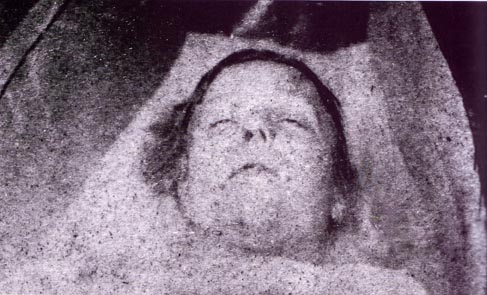*Image Credit: Wikimedia Commons One of the world’s most famous unsolved mysteries began early in the morning of Friday, August 31, 1888: at 3:40am, Charles Cross drove his cart down Buck’s Row and noticed a body. Mary Ann Nichols, a short prostitute with a drinking problem, had been stabbed to death. With no leads and no witnesses, police were now on the hunt for a ghost that would later get the name Jack the Ripper. The first of five gruesome killings attached to the notorious murderer, Nichols had been seen alive a little more than an hour before. With Nichols’ death, the London press launched into a frenzy. Over the previous four months, two other prostitutes had been killed in the Whitechapel district, leaving many to wonder if a serial killer was on the loose in central London. Though the first woman had fallen victim to a street gang, the similarity between Nichols’ death and that of Martha Tabram three weeks before — both had been stabbed repeatedly in the neck and torso. The difference in the wounds, however, has left the majority of experts claiming Nichols met her end at the hands of Jack the Ripper and Tabram did not. Late on the evening of August 30th, Nichols had been walking along Whitechapel Road, likely in search of business for the evening. Estranged from her husband, she had taken to prostitution in order to supplement the support he provided. Just after midnight, witnesses reported she left a nearby pub and, two hours before her body was found, had been kicked out of a boarding house due to an inability to afford rent for the night. At 2:30am on August 31st, she ran across a friend, Nelly Holland. The two discussed the evening’s events and parted within a few minutes. An hour later, Nichols was found dead. When Dr. Henry Llewellyn arrived to examine the body, he determined the murder had occurred around 3:30, with the victim succumbing to two violent slashes across the throat and a gaping wound across the abdomen inflicted with a series of stabs. Police on the scene talked with residents and workers in the area within minutes of the surgeon’s arrival. No one reported even a slight hint of trouble — no screams, no sounds of a struggle, nothing. To complicate matters further, it seemed as if Nichols had not bled in a manner befitting such a grisly death. Officer John Thain reported later that a “mass of congealed blood” was found beneath the body. (Much of her blood had been soaked up by her clothes.) Investigators were at a loss, but the press went on speculating, grabbing at whatever shreds of information they could find and using conjecture to fill in the blanks. By the time the inquest had been completed on September 24th, a second woman named Annie Chapman had been killed in a similar manner. Within a week, Elizabeth Stride and Catherine Eddowes would be murdered the same night. A month later, Mary Jane Kelly would follow — the most horrifying of them all. In the century-plus since these five deaths, researchers have continued to be baffled by the scope of Jack the Ripper’s rampage. Modern forensic science, much more inclined to use evidence than racially-suspicious crowds of the era, continues to profile the mysterious killer in the hopes of solving the mystery and the extent of his rampage. Despite advances in science and technology, investigators continue meeting with just as much success as their forbears: absolutely none.
August 31, 1888 CE – Mary Ann Nichols is Found Dead in Whitechapel, London, Launching the Legend of Jack the Ripper
*Image Credit: Wikimedia Commons One of the world’s most famous unsolved mysteries began early in the morning of Friday, August 31, 1888: at 3:40am, Charles Cross drove his cart down…
475
